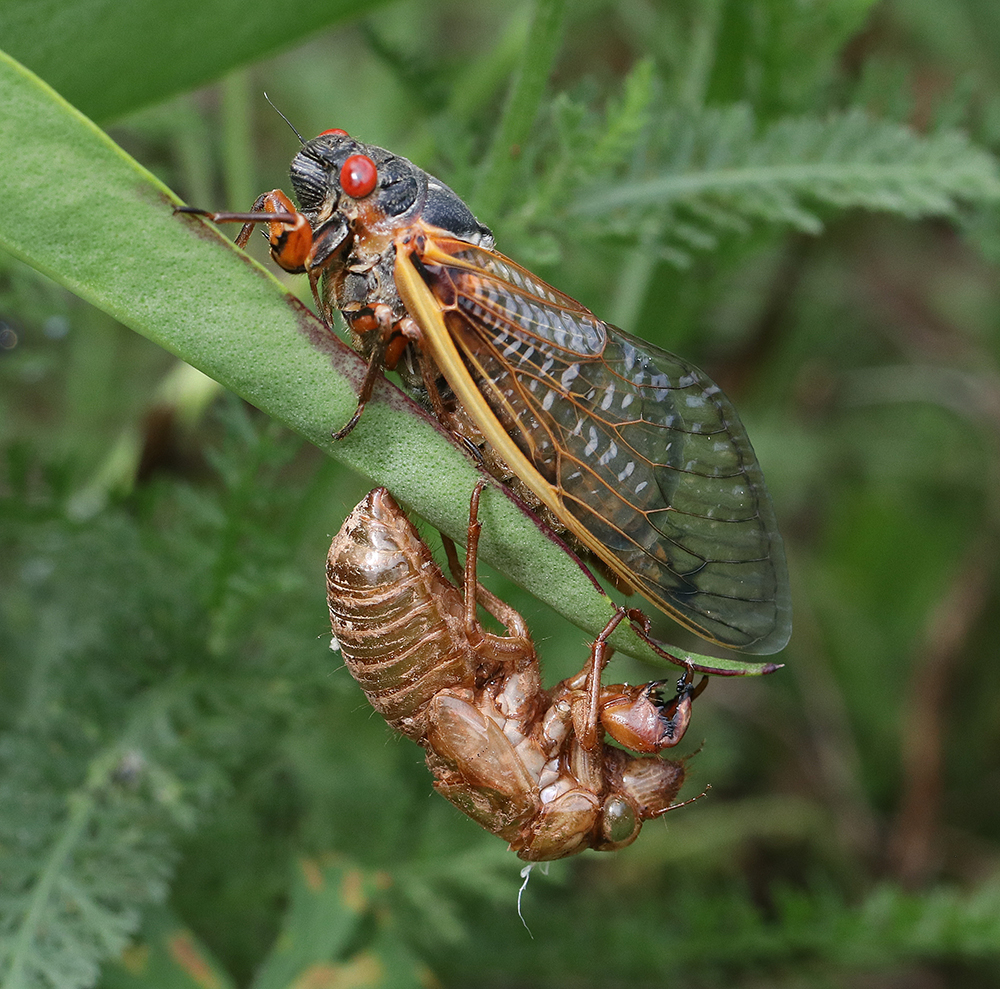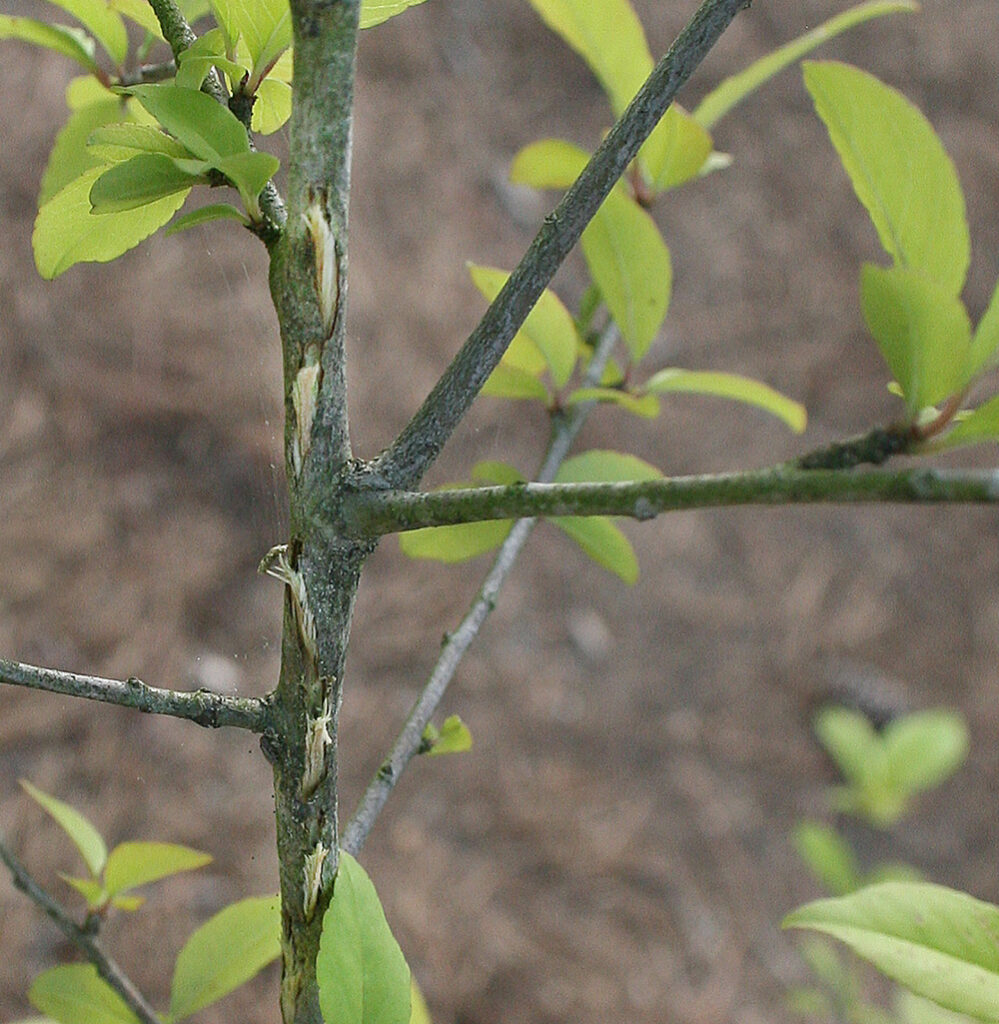Should Farmers & Gardeners Worry About the Upcoming Cicada Emergence?
go.ncsu.edu/readext?998214
en Español / em Português
El inglés es el idioma de control de esta página. En la medida en que haya algún conflicto entre la traducción al inglés y la traducción, el inglés prevalece.
Al hacer clic en el enlace de traducción se activa un servicio de traducción gratuito para convertir la página al español. Al igual que con cualquier traducción por Internet, la conversión no es sensible al contexto y puede que no traduzca el texto en su significado original. NC State Extension no garantiza la exactitud del texto traducido. Por favor, tenga en cuenta que algunas aplicaciones y/o servicios pueden no funcionar como se espera cuando se traducen.
Português
Inglês é o idioma de controle desta página. Na medida que haja algum conflito entre o texto original em Inglês e a tradução, o Inglês prevalece.
Ao clicar no link de tradução, um serviço gratuito de tradução será ativado para converter a página para o Português. Como em qualquer tradução pela internet, a conversão não é sensivel ao contexto e pode não ocorrer a tradução para o significado orginal. O serviço de Extensão da Carolina do Norte (NC State Extension) não garante a exatidão do texto traduzido. Por favor, observe que algumas funções ou serviços podem não funcionar como esperado após a tradução.
English
English is the controlling language of this page. To the extent there is any conflict between the English text and the translation, English controls.
Clicking on the translation link activates a free translation service to convert the page to Spanish. As with any Internet translation, the conversion is not context-sensitive and may not translate the text to its original meaning. NC State Extension does not guarantee the accuracy of the translated text. Please note that some applications and/or services may not function as expected when translated.
Collapse ▲
Periodical cicada that has just molted. This is a 17 year cicada from Brood IX back in 2020. This photo was taken on April 27, 2020. Photo by Debbie Roos.
In case you haven’t heard, 2024 marks the emergence of the 13-year periodical cicadas (Magicicada spp.). The 13-year cicadas are known as Brood XIX, a.k.a., the Great Southern Brood, with a geographic range extending from Maryland to Georgia and in the midwest from Iowa to Oklahoma (15 states total). You may have heard that there will be a rare emergence of both the 13-year and the 17-year cicadas this year but in North Carolina we will only see the 13-year cicadas.
There are seven species of periodical cicadas and they are only found in eastern North America (we also have annual cicadas in North Carolina; these are green and black and can be heard in mid-summer every year). Four species of periodical cicadas have 13-year life cycles and three species have 17-year cycles.
Periodical cicadas have black bodies with red eyes and orange wing veins. Cicadas don’t bite or sting, and are not known to be poisonous or transmit disease so they are not a threat to humans or animals. They have a very unique life cycle. A 13-year cicada emerges after 13 years when the soil temperature reaches about 64°F at a depth of 7-8 inches. The female cicada will search out woody trees and shrubs to lay her eggs; she inserts her saw-like ovipositor into a small-diameter branch and excavates Y-shaped eggnests. She may lay up to 20 eggs in each nest. The eggs hatch in 6-10 weeks and the cicada nymphs drop to the ground, burrow underground, and feed on tree roots until they emerge in 13 or 17 years.
The last time we saw these 13-year cicadas in North Carolina was in 2011 when we spent over a month in the company of millions of cicadas, marveling at the surprisingly loud and surreal din of their mating calls as we shared cicada stories with friends and neighbors. The ubiquitous insects were a big hit with kids, dogs, cats, chickens, and copperheads (the snakes love to snack on them)!
I have been getting questions from growers about whether the upcoming cicada emergence will cause problems for their orchards and other trees. My answer is: it depends! It depends on where you are and how old your trees are.
First of all, keep in mind that not all counties in North Carolina will see a cicada emergence. Based on historical data from the University of Connecticut, fewer than 20 NC counties can expect to see cicadas this year. Click on this map and Zoom in to see where in North Carolina we can expect to see them.
Many folks who experienced large cicada populations in 2011 were left with damaged young trees and bushes where the female cicadas cut slits into tree branches to lay their eggs. The cicadas prefer stems and branches about the diameter of a pencil to deposit their eggs; on mature trees only the branch tips are damaged (this is called “flagging”) and the trees recover but on young trees the damage can occur on the main trunk and on primary lateral branches, causing significant damage.
Farmers and gardeners who have young plantings of blueberries, fruit trees, brambles, grape vines, or other woody trees have plants that are potentially vulnerable to cicada injury. I know first-hand the damage these cicadas can do to young trees as I had to replace several newly planted native trees in my pollinator garden in Pittsboro (Chatham County) after the Brood XIX emergence in 2011. The damage was all up and down the central leaders and lateral branches. The stems were all at the perfect, most enticing pencil-sized diameter that cicadas prefer and they did a number on them (see photos of damage below). If only a few branches are damaged they can be pruned out but when the majority of branches are significantly damaged, the young tree or bush might need to be replaced.

Damage caused by female periodical cicada laying eggs in a young possumhaw (Ilex decidua) tree stem. This was the 13-year Brood XIX cicadas back in 2011. All of the recently planted possumhaw trees in my demonstration pollinator garden were damaged to some degree. Photo by Debbie Roos.

This damage caused by cicada egg laying activity was done to the main stem or central leader. Photo by Debbie Roos.
If you are in an area that is expecting a high population of cicadas to emerge and if you have vulnerable plantings of young trees, you can use fine netting to exclude egg-laying females from the small branches (make sure you secure the netting to the trunk so the cicadas can’t climb up from underneath). Remove the netting once the cicadas have died off.
For more information:
The Cicadas Are Coming! Fear Not Though – NC State Extension
Periodical Cicadas in the Landscape – NC State Extension
Periodical Cicada Information Pages – University of Connecticut
General Periodical Cicada Information – University of Connecticut


